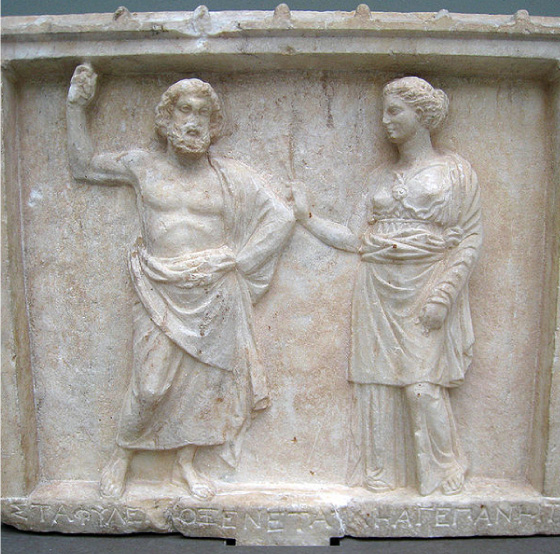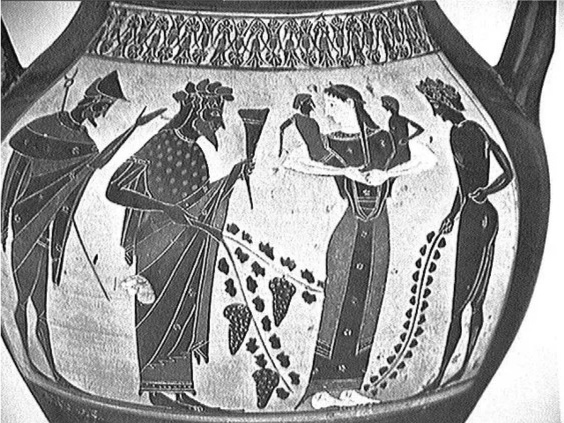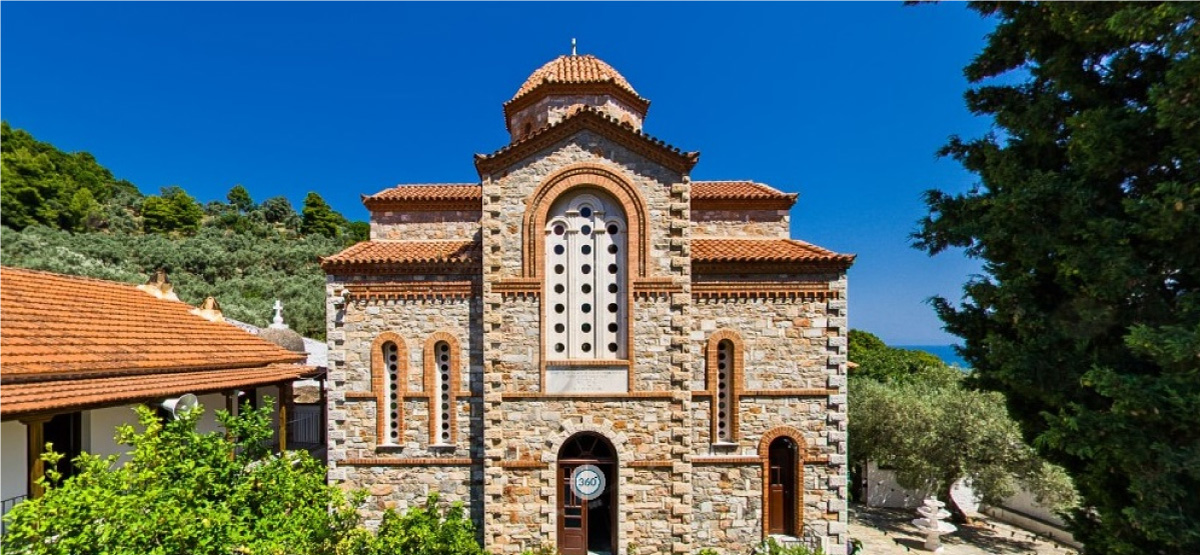


Stories & Myths
The ancient name of the island of Skopelos was Peparithos, from the name of the brother of its first settler, Staphylos, Peparithos. This name is also mentioned by Thucydides. Staphylos, first mythical settler of Skopelos (Peparithos), was the son of the god of fertility, euphoria, vine and wine, Dionysus and Ariadne, daughter of the king of Crete, Minos.
According to the myth, Theseus, son of Aegeus, king of Athens, was sent with 7 young boys and 7 young girls to the King of Crete, Minos, to be offered as a sacrifice to the Minotaur (a strange creature of nature, half man, half monster) who lived in the labyrinth of the palace of Knossos, in Crete. In Crete, Theseus meets Ariadne, daughter of Minos. Ariadne falls in love with him and helps him, by giving him a ball of wool, to escape from the labyrinth and be saved. Indeed, Theseus kills the Minotaur, finds the exit, kidnaps Ariadne and leaves Crete.
Staphylus and his brother Phanus are counted among the Argonauts. As one of Rhadamanthys’ generals, he was the founder of the colony of Peparethos on the island of Skopelos, in the Northern Sporades island chain. Staphylus dwelt in Naxos and was married to Chrysothemis, by whom he had three daughters: Rhoeo, who was a lover to Apollo, Parthenos, and Molpadia or Hemithea.
The latter became the mother of Basileus with Lyrcus, after Lyrcus had made a journey to the oracle at Didyma. Staphylus is said to have enticed Lyrcus into too much drinking of wine and then, when Lyrcus’ senses were dulled by drunkenness, united him with Hemithea.






In the 4th century, the Orthodox faith on the island of Skopelos was shaken by the delusions of heretics and the fury of pagans. Bishop Achillios decided to send Riginos there, with the aim of contributing to the consolidation of the Orthodox faith. Indeed, Riginos rescued the inhabitants from the darkness of sects, while at the same time he developed charitable activity. For his piety and virtuous life he was ordained deacon and then elder. When the bishop of Skopelos fell asleep, Riginos received the rank of bishop.
In 347 he was invited and participated in the Council of Sardis (present-day Sofia, Bulgaria) , which was attended by 300 Orthodox high priests of the Western Church and 76 high priests of Arius, the Eastern Church. Bishop Riginos excelled, while with hagiographic evidence he defeated the followers of Arius, who left before the end of the work. Riginos returned to Skopelos where he was enthusiastically received by his flock.
In the period of the empire of Julian the Violator (331-363) the peace of the Church was disturbed again and fierce persecutions began against the Christians. Among the first to be arrested was Bishop Riginos, whose fame had reached Vasilevousa. The heathen prefect of Greece went to the island and tried, by promises and threats, to persuade him to deny his faith in Christ. When she saw his steadfastness, she ordered him to be tortured and imprisoned. On February 25 of the year 362, Riginus was brought to the prefect for the last time. After he confessed his faith again, by order of the official the executioners blinded him and then dragged him to the “Old Bridge” location where they decapitated him with a sword. At night, the inhabitants secretly took the dead body of their Bishop and buried it on a nearby hill, next to a spring and an ancient Doric temple.
After his martyrdom, Bishop Riginos was proclaimed a saint of the Orthodox Church and was recognized as the protector and patron of Skopelos.
